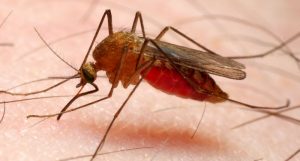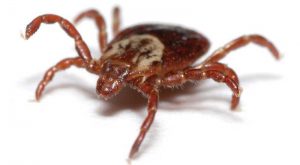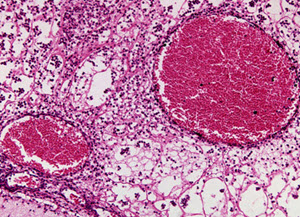Chagas disease, also known as American trypanosomiasis, is caused by the parasite Trypanosoma cruzi. The name Chagas disease is derived from Dr Carlos Chagas from Brazil who identified the disease in 1909.
The most common transmission route is contact with the faeces of certain blood-sucking bugs that serves as intermediary hosts for the parasite.
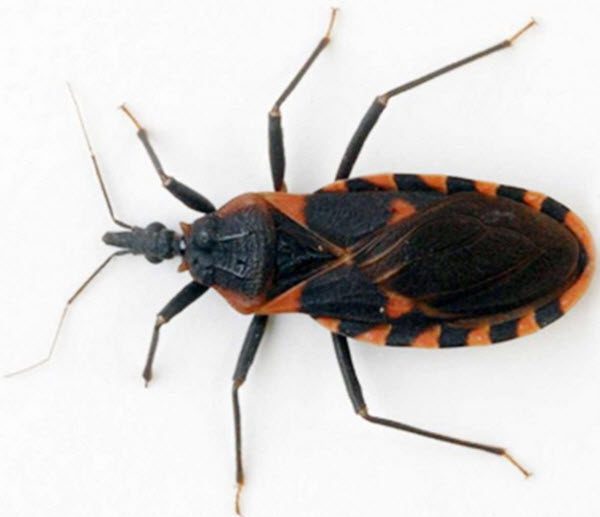
Risky areas
Chagas disease is widespread in large parts of South America, Central America and Mexico.
It is chiefly associated with humble abodes in the countryside, where blood-sucking triatomine bugs live in thatched roofs, cracked walls, etc.
Contracting the disease
After being bitten by an infected bug
The most common transmission route is from the faeces of blood-sucking bugs infested with the parasite. Blood-sucking bugs capable of spreading Chagas disease are fund within several different genera, including Panstrongylus, Rhodnius and Triantoma.
The parasites can not penetrate intact skin, but many people unknowingly help the Chagas parasites into the body by scratching at the bite site, moving the faeces of the bug into the wound created by the bug, or even creating scratches in the skin through which the parasites will gain access.
The parasites can also enter through mucous membranes, e.g. if you first scratch the bite site and then scratch your eyes.
The blood-sucking bugs responsible for spreading Chagas disease will typically bite at night and many people never even wake up when it happens. The unknowing victim automatically scratches the bite site in their sleep, helping the parasites to get in.
Food and drink
Since parasites can enter through mucous membranes it is possible to catch Chagas disease from food, drink, etc that has been contaminated with parasites, but this transmission route is rare.
Other transmission routes
- An infected pregnant mother can transmit the infection to her child.
- It is possible to be infected through a blood transfusion if the donor blood contains parasites.
- It is possible to be infected through an organ transplant if the donor organ contains parasites.
- If you get the parasites on a mucous membrane or on skin that isn’t intact, you can catch the disease. The parasites doesn’t have to wrapped in bug faeces, you can just as well catch the disease from blood or tissue from an infected human or other non-bug animal.
Symptom
This disease consists of two stages, the acute stage and the chronic stage, and the symptoms will very depending on which stage the disease is currently in.
The acute stage
It is very common to notice no symptoms or mild symptoms only right after transmission. A lot of people will therefore go through the acute stage of Chagas disease without realizing that they have been infected. The acute phase will typically go on for anywhere from a few weeks to a few months after the transmission date.
Examples of symptoms: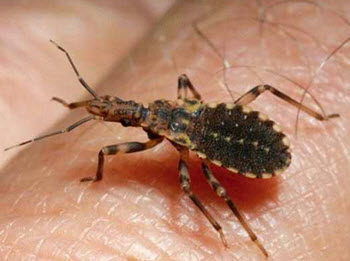
- Fever
- Swollen lymph glands
- Fatigue
- Head aches
- Body aches
- Skin rash
- Diarrhoea
- Vomiting
- Loss of appetite
- Swollen liver (usually not noticed by the patient, only by the doctor during examination)
- Swollen spleen (usually not noticed by the patient, only by the doctor during examination)
Chagoma
Some people develop a type of swelling around the site where the parasites entered the body. This type of swelling is known as a chagoma.
Romaña sign
If the parasites went through the mucous membrane of the eye, causing the eyelid to become swollen, this swelling is know as the Romaña sign. The Romaña sign is often accompanied by eye inflammation. Please note: The Romaña sign will typically take weeks to disappear. If the swelling is only present for a week or so before vanishing without treatment, it is usually just an inflammation caused by the body reacting to compounds present in the faeces of the triatomine bug.
Is the acute stage dangerous?
The acute stage of Chagas disease is usually not dangerous.
In rare cases, the parasites can attack vital parts of the body during the acute stage, such as the brain, the membrane of the brain or the heart muscle. Such attacks can be very serious – even lethal. Small children and people with a weak immune system are especially susceptible to being severely ill during the acute stage of Chagas disease.
The chronic stage
For many people, the symptoms associated with the acute stage of Chagas disease will vanish even without treatment and the person will not know of the infection. The disease will now enter into its chronic stage.
It is not unusual for infected people to remain in the chronic phase for the rest of their lives and eventually die of completely unrelated causes without ever again experience any symptoms of Chagas disease. The parasites can also remain in the body without causing any symptoms for several decades and then suddenly start causing problems – sometimes very severe problems with a potentially lethal outcome.
A person infected with T. cruzi has a 30% risk of developing serious problems due to Chagas disease at some point in life.
Examples of health problems that can be the result of chronic Chagas disease:
- Enlarged oesophagus
- Enlarged colon
- Constipation
- Severe constipation leading to a perforated colon followed by sepsis
- Cardiomyopathy (heart muscle disease)
- Heart failure
Confirming the diagnose
If a person has T. cruzi in their blood, the parasites will be visible when a blood sample is studied under microscope. This method will not detect parasites hiding in other parts of the body. A person can be infected with T. cruzi without having parasites in the blood when the blood sample is taken.
An alternative method is to test the blood for antibodies against T. cruzi, but this will not tell you if there is an ongoing infection or not. The antibodies can be left there from a previous infection.
Treatment
T. cruzi is sensitive to several different anti-parasite medications. Two common choices are benznidazole and nifurtimox. Nitrofurtimox is typically administered orally twice a day for two months. With benznidazole, the standard treatment period is three months.
The sooner the treatment is started the better, because the internal damage caused by the parasites will not vanish just because the parasites die.
Life cycle
- A member of the subfamily Triatominae sucks blood from an human or animal infected with the T. cruzi parasite. Parasites in the form of trypomastigots enter the blood-sucking bug.
- The trypomastigots take up residence in the central part of the bug’s digestive system, where they multiply and develop into epimastigots.
- The epimastigots move to the end part of the bug’s digestive system and turn back into trypomastigots.
- The hungry bug pierces through the skin of a sleeping person and drinks the blood. The trypomastigots do not enter their new host during the sucking, because they are in the end of the bug’s digestive system and not at the part of the bug’s body where the sucking takes place.
- Eating Triatominae bugs have a habit of emptying their bowels. When the bug does this, the trypomastigots exit the bug’s digestive system and end up on the skin of the person whose blood is being eaten by the bug.
- In their sleep, the bitten person scratches the bite wound and its surrounding area, unknowingly helping the trypomastigots into the wound or creating scratch marks through which the parasites can enter. The person may also get trypomastigots on their hands and then give the parasites a lift to suitable mucous membranes, e.g by scratching the eyes, thumb sucking, etc.
- Inside the body of the new host, the trypomastigots will invade cells close to their point of entry. Once inside a cell, trypomastigots will turn into amastigots.
- The amastigots will increase in numbers.
- The amastigots turn into trypomastigots.
- The trypomastigots utilize the cardiovascular system of the host to spread throughout the body. While they are still in the cardiovascular system (in the host’s blood) they can be sucked up by a blood sucking Triatominae bug and spread to a new host.
- The trypomastigots that aren’t sucked up by Triatominae bugs search out various parts of the host’s body where they develop into intra-cellular amastigots.
